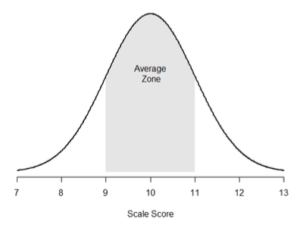I wrote last time about school climate surveys.
Yawn.
But perhaps not in this case. I am going to use the results of a 2019 climate survey of Fredericksburg’s only middle school, Walker-Grant, to make a point.
The results of that survey of students and staff were absolutely brutal. Especially the responses of the students.
When polled about student support, disciplinary structure, academic expectations, prevalence of teasing and bullying and aggression toward staff, they gave the bad “grades” to their school across the board.
I checked upon a couple of other middle schools in the state widely known to be problems, and the results were not close. Walker-Grant students had the worst opinion of their school I could find.
So, that is the context for the state-worst chronic absenteeism in 2021 and horrible learning losses in 2022.
The survey also predicted that nothing would be done by the leadership of the school to make improvements based upon that survey.
Because they never had before.
States were required by the Every Student Succeeds Act (ESSA) in 2015 to pick an additional indicator for their school quality systems.
The law requires it to be a non-academic measure of “school quality or student success.” This change was in response to critics’ contentions that a sole focus on academic measures was harshly punishing already-failing schools and vulnerable student populations without any other context.
The non-academic fifth indicator was intended to reveal how hard schools were trying to improve. It was an excellent idea.
University of Virginia scientists developed the Authoritative School Climate Survey in Virginia schools over more than a decade with millions of dollars of federal money. It was adopted by the Commonwealth and used through 2020.
In this case, it was so good that it proved predictive, not of future success, but of failure.
The key scales presented on page 2 of the report are scaled scores designed to make them easier to interpret. For each scale, raw scores for student and staff participants within a school were averaged to create school means for students and for staff. The school means across the state were transformed so that the state average is 10 and the standard deviation is 1.
As a result, schools with scores between 9 and 11 are in the average range. Schools with scores of 11 or higher are statistically above average and schools below 9 are statistically below average and show a need for improvement.
Walker-Grant Middle was awarded student scores that averaged 7.8.
The highest, student engagement, was 8.43, the only score above 8. Of the staff’s supportiveness, helpfulness and respect, 7.76. Their view of the disciplinary structure was 6.93.
Compared to the views of the students, the staff was rather sanguine about Walker-Grant. But none of their scores reached 10. And their view of the students was 8.5.
So, to those who ask who could have imagined the collapse of that school measured in chronic absenteeism in 2020-21 and massive learning losses documented in the 2021-22 SOLs, the answer is the students in 2019.
Perhaps we should pay more attention.
The meeting-filled, jargon-intensive and race-centric school improvement plan at Walker-Grant does not reference the biggest issues exposed in that survey.
The 2020-25 (Fredericksburg) Division Comprehensive/Strategic Plan revised August 21, 2020 mirrored the focus of the Walker-Grant school improvement plan and similarly made no reference to school climate surveys.
I will deal in a future article with the changes to the school climate survey made in 2020 and sprung on the schools in 2021.
I am not a fan.
Updated Sep 17 at 7:35 AM




